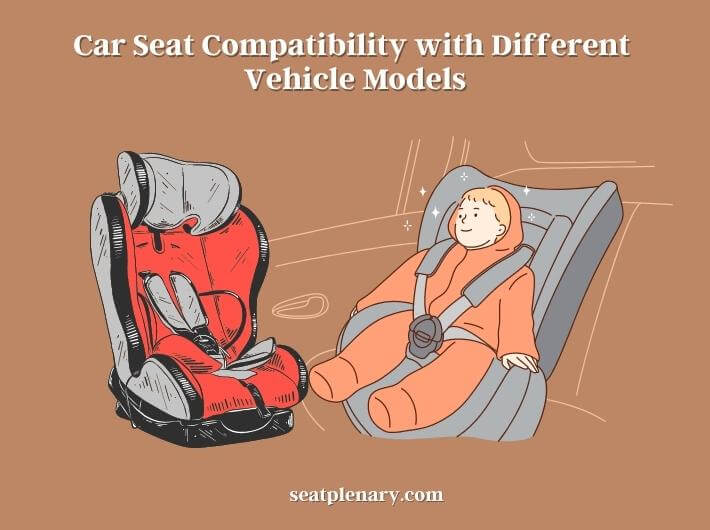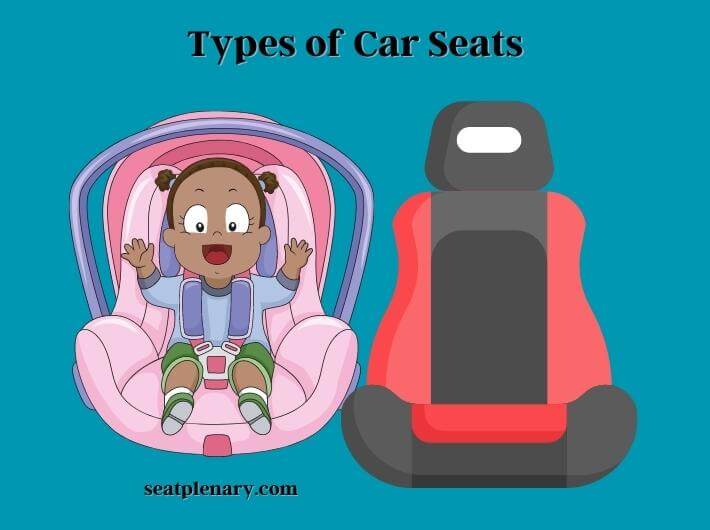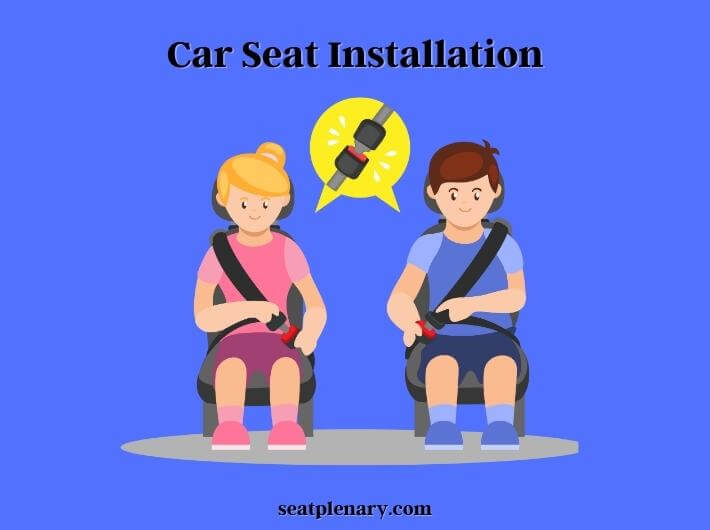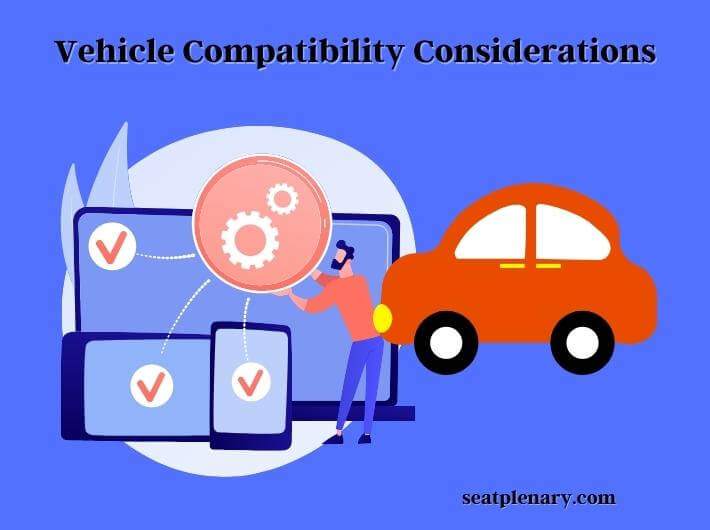As a parent, keeping your child safe is a top priority, and that includes keeping them safe while on the road. Choosing the right car seat for your child can be a daunting task, but it’s essential to ensure their safety and well-being while traveling.

It’s not just about choosing the right type of car seat for your child’s age and weight; it’s also essential to consider the compatibility of the car seat with your vehicle model.
As the automotive world continues to evolve, the importance of car seat compatibility with different vehicle models is becoming increasingly important. Car seats are an essential part of keeping our children safe in the car, so it is essential that parents and caregivers understand the different types of car seats and how they fit into different vehicle models.
Different car seat manufacturers have different requirements for a car seat to be compatible with a specific vehicle, so it’s important to consider the specifics of your vehicle and child before buying a car seat.
Types of Car Seats
Before we delve into car seat compatibility with different vehicle models, let’s first review the different types of car seats available.
Infant Car Seats
These are rear-facing car seats designed for infants up to 22 to 35 pounds, depending on the specific model. Infant car seats typically come with a handle for easy carrying, making them a popular choice for parents who want to transfer their sleeping baby from the car to the stroller or home.
Convertible Car Seats
These car seats can be used in both rear-facing and forward-facing positions, making them a versatile option for parents. They can accommodate children up to 40 to 80 pounds, depending on the specific model.

Booster Seats
Booster seats are designed for children who have outgrown their convertible car seats but are not yet tall enough to use a seat belt without assistance. Booster seats elevate the child’s seating position and provide a more secure fit for the seat belt. They can accommodate children up to 80 to 120 pounds, depending on the specific model.
Combination Seats
These car seats combine the features of a convertible car seat and a booster seat, providing a 5-point harness system for younger children and a booster seat for older children. They can accommodate children up to 40 to 100 pounds, depending on the specific model.
Now that we have reviewed the different types of car seats let’s explore car seat compatibility with different vehicle models.
Car Seat Installation
Proper car seat installation is critical to ensuring your child’s safety while on the road. It’s essential to follow the manufacturer’s installation instructions carefully and use the correct installation method based on your child’s age and weight.

1. Rear-facing car seats should be installed in the back seat of the vehicle, and the car seat should be reclined at the appropriate angle to support your baby’s head and neck. Make sure the car seat is secured tightly with either the seat belt or the LATCH system, and the harness is adjusted snugly around your baby.
2. Forward-facing car seats should also be installed in the back seat of the vehicle and secured tightly with either the seat belt or the LATCH system. The harness should be adjusted snugly around your child, and the car seat should be installed at the appropriate angle.
3. Booster seats should be placed in the back seat of the vehicle and used with a lap and shoulder belt. The lap belt should fit snugly across your child’s hips, and the shoulder belt should fit snugly across your child’s chest.
Vehicle Compatibility Considerations
When it comes to car seat compatibility with different vehicle models, there are several factors to consider. These include:

Vehicle Seat Belt System
Car seats can be installed using either the vehicle’s seat belt system or the LATCH system. LATCH stands for Lower Anchors and Tethers for Children and is a system that allows car seats to be attached to the vehicle using lower anchors and top tether straps. Not all vehicles have LATCH systems, and some may have different LATCH configurations, so it’s essential to check your vehicle owner’s manual to determine which installation method to use.
Vehicle Seat Configuration
Different vehicle models have different back seat configurations, including the number of seats, the size of the seats, and the placement of the seat belts. Some vehicles may have bucket seats, while others may have bench seats, which can affect car seat installation. It’s essential to check your vehicle owner’s manual and the car seat manufacturer’s compatibility list to ensure a secure fit.
Vehicle Headrests
Some car seat models require the vehicle headrest to be removed to ensure a secure fit, while others may require the headrest to remain in place. It’s essential to check the car seat manufacturer’s instructions and your vehicle owner’s manual to determine the proper installation method.
Vehicle Weight Limit
The weight limit of your vehicle can also affect car seat installation. It’s essential to check your vehicle owner’s manual to determine the maximum weight capacity for your vehicle’s back seat.
Vehicle Age
Older vehicles may not have the necessary safety features to ensure a secure car seat installation. It’s essential to check your vehicle owner’s manual and consult with a certified car seat technician to determine if your vehicle is suitable for car seat installation.
Common Car Models and Car Seat Compatibility
Car seat compatibility can vary depending on the make and model of the vehicle. Here are some common car models and their compatibility with different car seat types:
Honda Civic
The Honda Civic is a popular compact car that is compatible with most infant, convertible, and booster car seats. The back seat is spacious enough to accommodate most car seats, and the LATCH system is easy to access and use.
Toyota Camry
The Toyota Camry is a mid-size sedan that is compatible with the most infant, convertible, and booster car seats. The back seat is spacious enough to accommodate most car seats, and the LATCH system is easy to access and use.
Ford F-150
The Ford F-150 is a popular pickup truck that is compatible with the most infant, convertible, and booster car seats. The back seat is spacious enough to accommodate most car seats, and the LATCH system is easy to access and use.
Jeep Wrangler
The Jeep Wrangler is a popular SUV that is compatible with most infant, convertible, and booster car seats. However, the back seat is narrow and may make the installation of some car seats difficult.
Subaru Outback
The Subaru Outback is a popular wagon that is compatible with most infant, convertible, and booster car seats. The back seat is spacious enough to accommodate most car seats, and the LATCH system is easy to access and use.
Chevrolet Tahoe
The Chevrolet Tahoe is a large SUV that is compatible with most infant, convertible, and booster car seats. However, the back seat is narrow, and some car seats may not fit properly.
It’s essential to check the car seat manufacturer’s compatibility list and your vehicle owner’s manual to ensure a secure fit. Additionally, testing the car seat fit in your vehicle before making a purchase can help you avoid compatibility issues.
Choosing the Right Car Seat for Your Vehicle
Choosing the right car seat for your child and your vehicle is crucial to ensuring your child’s safety while on the road. Here are some factors to consider when choosing a car seat for your vehicle:
Age and Size of Your Child
The age and size of your child will determine which type of car seat to use. Infant car seats are suitable for newborns and young infants, while convertible car seats can be used from infancy through toddlerhood. Booster seats are designed for older children who have outgrown their convertible car seats but are not yet ready to use the vehicle’s seat belt alone.
Type of Car Seat
There are several types of car seats, including infant, convertible, and booster seats. Infant car seats are rear-facing and designed for infants up to 35 pounds. Convertible car seats can be used rear-facing for infants and forward-facing for toddlers up to 65 pounds. Booster seats are designed for children who have outgrown their convertible car seats but are not yet ready to use the vehicle’s seat belt alone.
Car Seat Weight and Size
The weight and size of the car seat can affect its compatibility with your vehicle. It’s essential to check the car seat manufacturer’s compatibility list and test whether the car seat fits in your vehicle before making a purchase.
Installation Method
Car seats can be installed using either the vehicle’s seat belt system or the LATCH system. LATCH stands for Lower Anchors and Tethers for Children and is a system that allows car seats to be attached to the vehicle using lower anchors and top tether straps. Not all vehicles have LATCH systems, and some may have different LATCH configurations, so it’s essential to check your vehicle owner’s manual to determine which installation method to use.
Safety Features
Look for car seats that meet or exceed federal safety standards. Some car seats may also have additional safety features, such as side-impact protection, that can provide extra protection in the event of an accident.
Benefits of Car Seat Compatibility
Car seat compatibility refers to the ability of a car to accommodate a child’s car seat securely and properly. There are several benefits of car seat compatibility, including:
Safety
The most important benefit of car seat compatibility is the safety of the child. When a car seat is properly secured in a car, it can significantly reduce the risk of injury or death in the event of an accident.
Convenience
Car seat compatibility allows parents to easily and quickly secure their child’s car seat in the car. This is especially important for busy parents who need to get in and out of the car quickly.
Peace of Mind
Knowing that your child’s car seat is properly secured in the car can give parents peace of mind and reduce stress when driving with their child.
Cost-Effective
Car seat compatibility can save parents money by allowing them to use the same car seat for multiple cars. This is especially beneficial for families with more than one car or for grandparents or other family members who frequently transport the child.
Compliance With the Law
Many countries have laws that require children to be properly secured in a car seat while traveling in a car. Car seat compatibility helps parents comply with these laws and avoid fines or legal issues.
Frequently Asked Questions (FAQs)
What Factors Determine the Compatibility of a Car Seat with a Vehicle Model?
The compatibility of a car seat with a particular vehicle model depends on several factors. These include the size of the car seat, the design of the vehicle’s seats (including whether they’re bucket or bench style), the presence of LATCH (Lower Anchors and Tethers for Children) system, and the type of seat belt system the vehicle has. Also, the position and angle of the vehicle’s seats and whether the vehicle has airbags in the rear seats can also impact compatibility.
How Can I Check If a Specific Car Seat Is Compatible with My Vehicle?
The easiest way to check if a specific car seat is compatible with your vehicle is by referring to the car seat manufacturer’s manual or their website. Most manufacturers provide detailed compatibility charts that list various vehicle makes and models. Another resource is the vehicle’s owner manual, which often provides guidelines for car seat installation.
Are There Universal Car Seats That Fit All Vehicle Models?
While there are “universal” car seats designed to fit a wide range of vehicles, no car seat can be guaranteed to fit all vehicle models perfectly. This is because car interiors vary greatly, including seat design, available space, and seat belt systems. Therefore, it’s always recommended to test the fit of a car seat in your vehicle before purchasing, if possible.
4. Can I Use a Convertible Car Seat in Any Vehicle?
Convertible car seats are designed to be adaptable and can be used in most vehicles. However, just like any other type of car seat, their compatibility with your vehicle will depend on factors like the design of your car’s interior, seat shape, size, and available space. Always check the car seat and vehicle manuals for specific installation guidelines and compatibility information.
Is the LATCH System Compatible with All Vehicle Models?
The LATCH system, which stands for Lower Anchors and Tethers for Children, has been required in all passenger vehicles and car seats sold in the United States since 2002. Therefore, if your vehicle and car seat were produced after this date, they should be compatible with the LATCH system. However, the location and accessibility of the LATCH anchors can vary between vehicle models, which may affect the ease of car seat installation.
Summary
Selecting the right car seat for your vehicle is essential to ensure the safety of your child while on the road. When choosing a car seat, consider the type of car seat that is appropriate for your child’s age and size, as well as the weight and size of the car seat. Consider the installation method and safety features of the car seat to ensure that it meets or exceeds federal safety standards.
When it comes to compatibility issues between car seats and different vehicle models, it’s important to consult the car seat manufacturer’s compatibility list and test whether the car seat fits in your vehicle before making a purchase.
Read more:
